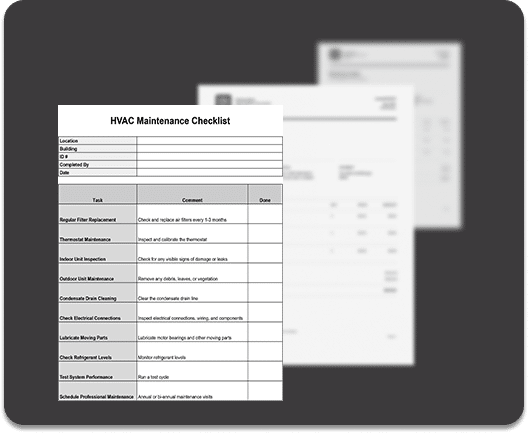What is a 4/10 work schedule?
A 4/10 work schedule or compressed schedule is a relatively new term used to describe the four-day workweek with 10 hours per day and three-day weekends. So, compressed work schedules require the employees to work four days each week, cover the full 40 hours, and have more personal time.
Unlike the standard 5-day work schedule and eight-hour days, the compressed schedule allows the employees to have one more free day.
This exciting change in the way the employees work has shown amazing results in productivity and better work-life balance, but it’s not a solution for every company out there.
The idea was first mentioned and implemented in countries such as Iceland, New Zealand, Japan, United Kingdom and it’s now being considered all around the world as an improved way to manage work schedules.
Even though there are no official recommendations or mandatory requirements to implement the compressed schedule there have been a few pieces of research that show the great potential it has for productivity and employee retention.
4/10 work schedule example
To completely understand the compressed work schedule here are a few examples:
|
Traditional 9-5 Schedule |
4/10 Schedule |
|
|
Monday |
9 AM to 5 PM |
8 AM to 6 PM |
|
Tuesday |
9 AM to 5 PM |
8 AM to 6 PM |
|
Wednesday |
9 AM to 5 PM |
8 AM to 6 PM |
|
Thursday |
9 AM to 5 PM |
8 AM to 6 PM |
|
Friday |
9 AM to 5 PM |
OFF |
Keep in mind that it’s not mandatory to have the three-day weekend and your employees might prefer to have a day in the middle off, or even Monday. It’s a good idea to implement a new schedule with added flexibility, as the staffing challenges can become quite chaotic at first.
However, many employees claim it changed their lives and compressed work weeks are definitely in the spotlight covered by business news reports all over the world.
Even though they are working the same number of hours per week the personal time off means a lot to employees.
Pros & cons of a 4/10 schedule for employees
While the compressed workweek schedule might sound amazing to many, there are a few things to consider before you try it out.
Depending on the company, the number of employees and the working hours here are the most common advantages and disadvantages you can encounter with the alternative schedule.
Pros of working 4/10 hour days
- Increased employee productivity
One of the best things that a Monday to Thursday schedule might bring to every company is increased productivity and overall satisfaction at the workplace.
Employees that work on this schedule are usually well rested and ready to tackle the assignments. Even though the employees work longer hours, the added day off really boosts morale and improves the quality of work. - Better work-life balance
A compressed work schedule allows employees to have more free time.
Long weekends or a one-day break during the week provide employees with additional rest and encouragement to perform better.
This gives them the opportunity to spend quality time with family and friends, plan vacations, and run errands, reducing the stress a regular work schedule often brings. - Less time and money spent on commuting
Depending on the location and the type of work employees appreciate less time spent commuting and gladly accept extra hours during the week. Commuting is often one of the hardest and most demanding parts of the working day, especially for people traveling via public transportation.
Cons of working 4/10 hour days
Even though the thought of an extra day off might sound fantastic to some employees there are always cases where this compressed work schedule is not suitable for everyone.
- Working longer hours on workdays
Workers with families and obligations often prefer to work fewer hours each day, even if it means they have only two days off. As the compressed schedule demands extra hours each day it can be a challenge for many. - Fatigue
Increased work hours can be very challenging for many professions, especially for people who are working demanding physical jobs or stand during their shifts.
Fatigue might be one of the most common reasons why it’s hard for some to accept compressed work schedules, as it compromises the quality and safety of the workplace. - Incompatible working hours with the daily schedule
Additional hours each day can sometimes clash with the schedule employees have in their private lives.
This is mostly because other companies such as daycares have regular 9 to 5 working weeks, and a compressed work schedule simply doesn’t fit the lifestyle.
So, even with the free time during the prolonged weekend, the workers are still experiencing additional costs for child care or other services that are on the traditional schedule.
Pros & cons of offering a compressed work week for employers
From the perspective of small business owners and employers, there are also many advantages and disadvantages to a compressed work schedule.
So, before you implement or offer fewer days to your employees here are some facts to consider.
Pros of offering a 4/10 work week to employees
- Improved employee and top talent retention
In addition to improved productivity, you can count on better retention of high-demand employees and even easier talent acquisition. Today, offering competitive wages, adequate vacation time, and other perks are considered the bare minimum.
So if you can’t necessarily afford any other perks you should consider offering employees to work 10 hours a day Monday through Thursday instead.
It’s been shown that this is one of the most popular alternative schedules that attracts and retains top talent professionals and boosts the morale in the company. - Fewer absences and PDO
With the 4-10 work schedules, your employees work the same amount of hours but have one day more to rest and deal with personal matters.
This means there should be fewer PDOs and absences making smooth workflow and better schedules.
Keep in mind that it’s not always easy to implement new schedules and it’s a good idea to rely on ready-made solutions such as scheduling software. This is a great tool for small businesses and big company owners that want to manage everything work-related from one app. - Better service hours
A compressed work week has longer hours every day, so if you have a service-based company it can be very beneficial to have those extra hours.
Other people who depend on your service might find it very useful that you are working and open when they get off work, so it can significantly increase your turnaround and income.
Cons of offering a 4/10 work week to employees
Working long stretches of time each day can be a great solution for many companies and employees, but it’s also not the best idea for some.
In addition to fatigue and potential challenges there are more disadvantages to consider:
- Incompatible work schedule with other business partners
While your company and employees work Monday through Thursday there are still many that don’t want to try this alternative schedule. So, it can create problems with your business partners, poor communication, and other challenges.
This is why it’s important to always have the proper coverage for essential workers and make the best schedule that will work for everyone. - Overtime pay requirements
In some states such as California, you could encounter potential unauthorized overtime and be required to pay the employees overtime for each day Monday to Thursday.
In addition, some states have strict rules and regulations when it comes to how many hours an employee works each day and week, so you have to check local laws on the U.S. Department of Labor’s official site. - Employee stress and conflicts
Some workers such as healthcare professionals and firefighters have unique work schedules that are considered normal in their line of work, but this is not true for all employees.
The added hours each day can quickly burn out your workers and even cause conflicts with other employees that disagree, or have a better schedule.
So, before implementing any other workweek schedule it’s a good idea to consult with your employees and management and come up with the most flexible solution that will benefit everyone.
It’s certain that a compressed work schedule is not a “one size fits all” solution but it can be a great step towards success.
Scheduling employees on a 4/10 work schedule
Set Core Office Hours
If you are considering the 4/10 work schedule you should first set core office hours.
Because the compressed work week might look different for various departments of your company, and many of them rely on each other for daily communication it’s vital to create core work hours and schedules that meet everyone’s needs.
Coordinate closely with other departments and ensure that potential problems are resolved in the first few weeks to avoid further miscommunication.
Keep in mind that there are other schedules based on the two-week period that might be more suitable for your business. The two-week cycle in the 9/80 work schedule for example can be the schedule employees prefer.
Find the Compressed Schedule That Works
As mentioned before the compressed work schedule is not a good fit for every company or every employee, so you might have to be creative and find a solution with your management team.
There are many compressed work schedules covered by business news, but it seems that 4 /10 work schedule is one of the most popular ones.
Coordinate Closely With all departments
Considering the extra day off can be any day in the week it’s a good idea to get familiar with the new schedule and ensure all the employees know the rules.
This is one of the reasons why so many company owners rely on software and apps that make everything easier.
Use Employee Scheduling Software
Managing many workers at once, and ensuring proper coverage of working hours, paid time, and tasks during the work week are challenging. One of the best ways to ensure you are maintaining a smooth workflow and implementing the compressed work week in the most efficient way possible is to use employee scheduling software.
With the right organization tools, you will have all the information in the app and instantly send everything to your employees. The schedules are easily managed, changed, and shared for an optimal and productive week.
Even with a complex compressed work schedule, you can adjust the work week in real-time, and share the information with the people who need to be informed quickly.
Make a flexible work schedule and improve work-life balance
One thing is for sure, the Monday to Thursday compressed work schedules have many benefits for you and your employees. It’s one of the best ways to improve satisfaction, increase top talent retention and have every job done in fewer days.
While some workers prefer working fewer hours each day many will accept the new 4/10 work schedule, so create flexible work hours that can benefit everyone.
FAQs about 4/10 work schedule and compliance considerations
- Do 4/10 schedules include lunch?
Fair Labor Standards Act (FLSA) requires meal time to be at least 30 minutes during the working day, so it’s the same even if you implement a compressed work week.
The employees can agree with the employer to have up to a one-hour lunch break that doesn’t count as working hours.
In case the employer offers the 4/10 or 9/80 work schedule they have to also provide the lunch break and inform the employees about the hours and breaks. - How do holidays work with 4/10 work schedules?
In case of the day off in the compressed workweek falls on a holiday the employee needs to use the workday immediately before the holiday as time off.
So, even if the holiday interrupts the compressed work week there are always ways to make compromises and still follow the laws and regulations. - How does overtime work with 4/10 work schedules?
Overtime is regulated differently depending on the state and your location. Special Overtime Rules Under the IWC Wage Orders state that “No overtime required for a regular schedule of not more than 10 hours per workday within a 40-hour workweek.” But, it’s always a good idea to check the laws and regulations in your state and ensure proper payments are made. Considering the paid time, overtime and compressed schedule are already a challenge to manage it’s a good idea to rely on employee scheduling software that already has all the legal information in the algorithm and does all the calculations for you.
- How 4/10 schedules affect overtime pay in California
California overtime laws state that nonexempt workers need to be paid 1.5 times their standard hourly wage when they work more than eight hours per day. However, there are exceptions for 10-hour work days in California.
In general, if the employee agrees to an alternative work schedule or in this case the 4/10 work week they can work for 10 hours 4 days each week without any compensation for the overtime. For any excess work beyond the scheduled 10 hours and up to 12 hours, the employee is entitled to 1.5 times the regular hourly wage for each hour worked. In case the work is longer than 12 hours the employee has the right to double the regular pay rate.
Organizing the 4/10 work schedule with a scheduling app
A compressed work week can be very beneficial for any business that wants to try new and exciting trends, accommodate the existing employees, boost efficiency and even attract talents.
But, this incredible opportunity has some challenges mainly considering the organizational process and optimal implementation of the new schedule.
Luckily, you can use a job scheduling app to easily organize your 4/10 schedule electronically, communicate it with your team and also accurately track your team’s hours to make sure everyone is sticking to the plan. So, if you want to test out 4 day work week, consider implementing an employee scheduling app like Workyard to ensure the transition runs smoothly.


















